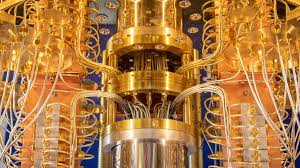5G Technology:-
5G Technology represents the fifth generation of
mobile network technology, designed to significantly enhance the speed,
responsiveness, and capacity of wireless networks. It promises faster data
download and upload speeds, lower latency (the delay before a transfer of data
begins following an instruction for its transfer), and the ability to connect a
vast number of devices simultaneously.
Key Features of 5G-
1. Enhanced Speed:-
o Offers data rates up to 10 Gbps,
which is significantly faster than 4G LTE.
2.
Lower Latency:-
o Latency can be reduced to as low as 1
millisecond, making real-time communication possible.
3. Increased Capacity:-
o Can support a large number of
connected devices, which is essential for the Internet of Things (IoT).
4.
Higher Frequency
Bands:-
o Uses a wider range of frequency
bands, including millimeter waves (30 GHz to 300 GHz), which allows for higher
data rates but requires more base stations due to shorter range.
5.
Energy Efficiency:-
o Designed to reduce energy consumption
for devices and networks, enhancing battery life for IoT devices.
6.
Network Slicing:-
o Allows the creation of multiple
virtual networks within a single physical 5G network, each optimized for
different types of services and applications.
Example to Understand 5G Technology
Example: Smart Cities
Scenario: A city aims to
become a "smart city" by using advanced technologies to improve urban
infrastructure, services, and quality of life for its residents.
Implementation:
1. Traffic Management:
o 5G Sensors and Cameras: Deployed at intersections and along
roads to monitor traffic flow, detect accidents, and manage traffic lights in
real-time.
o Benefit: Reduces traffic congestion and
improves response times for emergency services.
2. Public Safety:
o 5G-Connected Drones: Used for surveillance and
monitoring public areas during large events or emergencies.
o Benefit: Provides real-time high-definition
video feeds to law enforcement, enhancing security and crowd management.
3. Energy Management:
o 5G Smart Grids: Connects various components of the
electrical grid, allowing for real-time monitoring and management of energy
consumption.
o Benefit: Optimizes energy distribution,
reduces outages, and integrates renewable energy sources more effectively.
4. Healthcare:
o 5G Telemedicine: Enables remote diagnosis and
treatment through high-definition video conferencing and real-time data
sharing.
o Benefit: Improves access to healthcare
services, especially in remote or underserved areas.
5. IoT Devices:
o 5G Smart Sensors: Used in buildings to monitor air
quality, temperature, and occupancy, optimizing energy use and improving
comfort.
o Benefit: Enhances the efficiency of building
management systems and reduces operational costs.
Layman's Explanation: Imagine your city is super connected, like a high-tech web
where everything talks to each other in real-time. Thanks to 5G, traffic lights
change faster based on current traffic, drones help police keep everyone safe
during big events, and doctors can check on patients without them needing to
leave home. All of this happens quickly and smoothly because 5G makes the
internet incredibly fast and reliable, allowing all these smart devices and
systems to work together seamlessly.
5G technology is like upgrading from a bike to a jet plane –
everything moves faster and can handle a lot more, making our lives more
connected and efficient.





.jpg)







